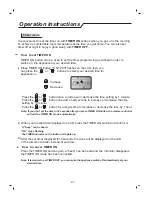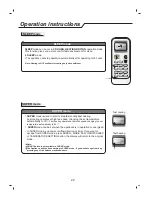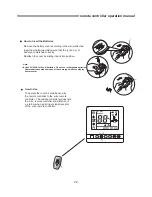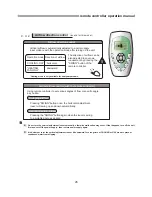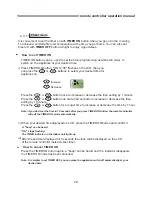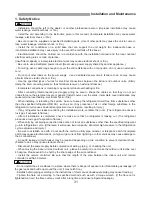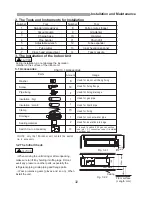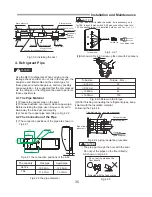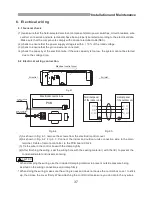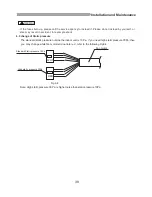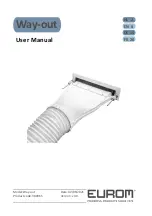
4. Refrigerant Pipe
Use the R410A refrigerant. When carrying on the
leakage check and test, do not mix in the oxygen, the
acetylene and flammable and the virulent gas, for
these gases are quite dangerous, and may possibly
cause explosion. It is suggested that the compressed
air, the nitrogen or the refrigerant be used to perform
these experiments.
4.1 The Pipe Material
(1) Prepare the copper pipe on the spot.
(2) Choose dustless, non-humid, clean copper pipe.
Before installing the pipe, use nitrogen or dry air to
blow away the tube dust and impurity.
4.2 The Connection of the Pipe
(1) The connection positions of the pipe are shown in
The capacity
Gas pipe
Liquid pipe
9.52mm
6.35mm
6.35mm
Gas pipe
Liquid pipe
(3) After finishing connecting the refrigerant pipes, keep
it warm with the insulation material.
6.35mm
9.52mm
15.88mm
19.05mm
Tube size
20
40
80
100
Torque
N.m
Clamp(attached)
Insulation
(attached)
Refrigerant pipe
(field supplied)
Side of the
indoor unit
Insulation
(field supplied)
Installation and Maintenance
Canvas duct
Horizon
Service mouth
Air inlet
(with filter)
600mm-600mm
Air-outlet
The valve for the amount of air
Insulation material
Outside air
(through
the filter)
Static pressure
box
Canvas duct
Static pressure
box
The valve for
the amount of air
DANGER
The pipe go through the hole with the seal.
Protected with the tape or plug.
Do not put the pipes on the
floor directly.
C
C
A
A
U
U
T
T
IO
IO
N
N
Do not put the pipes on the floor directly.
18k
9k,12k
Following the Fig 4.2.4
Fig 3.3.6 installing the duct
Fig 4.2.1 the connection positions of the tube
Fig 4.2.2 the pipe diameter
Fig4.2.1
(3) choose the copper pipe according to Fig 4.2.2
(2)AS shown in Fig 4.2.3,screw up the nuts with 2 spanners
Fig 4.2.3 Screw up the torque
Fig 4.2.4 piping insulation procedure
Fig 4.2.5
Fig 4.2.2
.
1
AS shown in Fig 4.2.5
35
12
.
7mm
The
18k
indoor unit include the switch
tie-in accessory
only
for 18K
indoor, It may switch
9.52 gas
connection
tube
into
12.7 connection tube
,
it
is
installed
outdoor
unit
for
Fig4.2.2.1.
G
as valve
O
utdoor unit
S
witch tie
C
onnection tube

